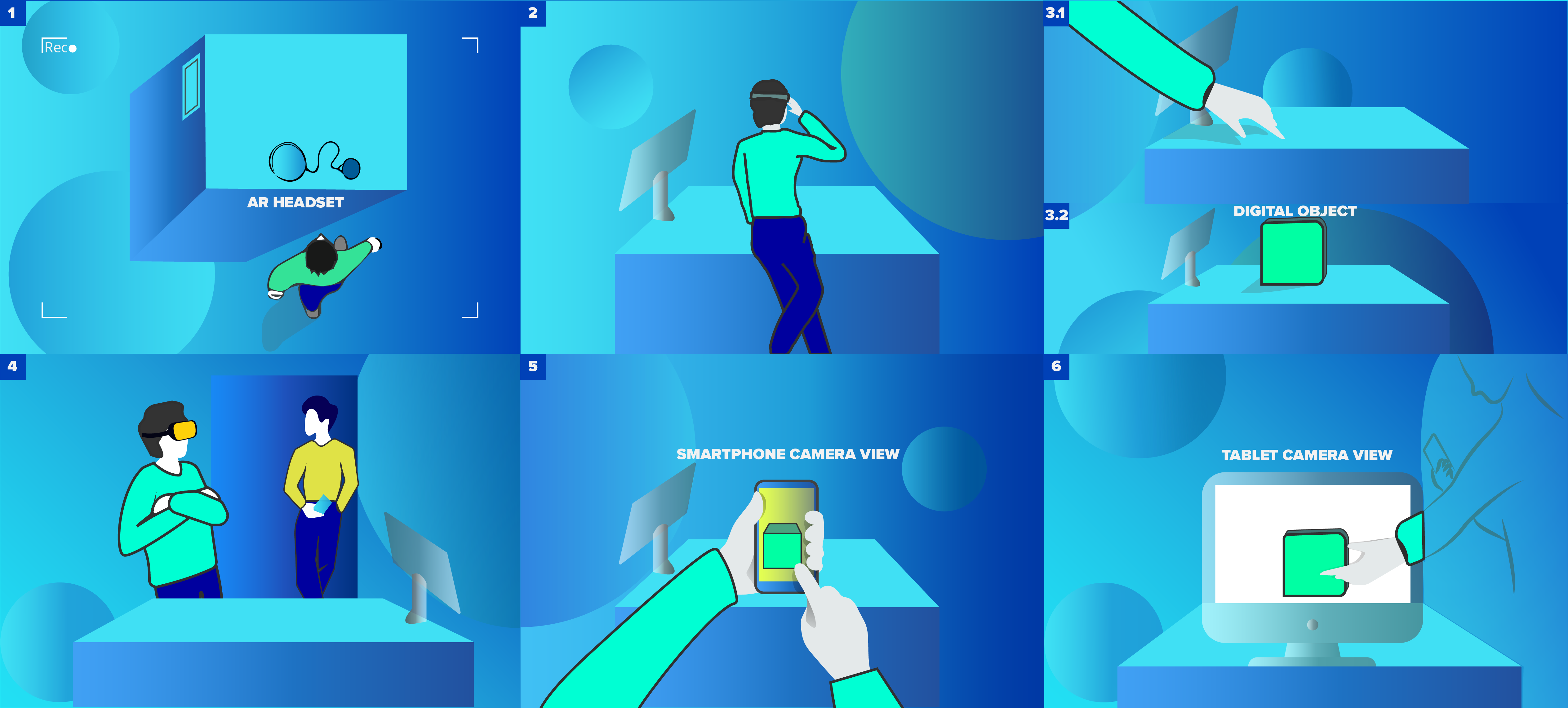Metaverse, Magicverse, or AR Cloud—there are so many names and products that offer the latest collective virtual shared space. However, for the sake of this document, we can call this technology a ‘seamless digital layer’—a persistent 3D digital copy of the real world, that enables sharing of AR experiences across multiple users and devices in real-time.
BACKGROUND
- 2D images were available on our mobile phones more than ten years ago, then there was an era of 3D objects
- In the late 2010s, virtual reality (VR) and augmented reality (AR) brought digitally innovative capabilities to our living rooms
- ARCore and ARKit were released in 2016-2017, allowing users to place a digital object in the real-world
- In 2018, the Magicverse was first introduced by Magic Leap. Magicverse is the emergent system, bridging the physical world with the digital one, on a large scale.
Many parts of the ARCloud will involve hosting big data, serving web APIs, and training machine learning (ML) models. In the future, there will be a need for a considerable amount of thought process regarding how we support real-time applications and AR interactions at scale.
5G networks will play a key role in supporting the AR experience for many people: it’s a challenge as well as an opportunity.
An AR application has to be connected and interact with the real-world. For instance, with physical people, places, or things. Without this connection, SDL can never really be AR-native. These capabilities are only possible with the support of the ARCloud.
OUR VISION OF THE FUTURE OF INTERACTION
- Our AR devices are the real-time interface to this parallel virtual world which is perfectly overlaid onto the physical world
- SoftServe’s R&D team re-define how people interact with AR and the environment. and prepare a vision as it should be scaled and implemented
- SoftServe’s R&D is working on a digital concept of a device agnostic application, where users can interact with each other, and with real and digital objects in real-time
- Application, where the same virtual and real stuff would be shown and synchronized with the cloud, no matter what device we held

HOW IT WORKS
The key part of this technology is that every device scans environment and creates mesh, later that mesh is uploaded and merged with meshes of same place in cloud, such method led to the creation of a high-accuracy AR mesh that can be later resolved by any device.
Everyone inside this environment could interact with all objects there and all devices determine their positions with millimeter precision based on different inputs, like optical recognition and scene understanding, inertial measurement units, GPS, Beacons, Wi-Fi, Bluetooth, cellular signals, and more.
It allows to turn any room or even building into digital canvases upon which immersive experience can be built.
LIMITATIONS OF EXISTING TECHNOLOGY
Current infrastructure is not ready to support massive parallel, data-intensive applications in real-time for a large number of people globally. Many challenges exist:
- Infrastructure and ecosystem
- Interoperability and standardization
- Modern user experience (UX)
When few technologies overlay, there are many opportunities for possibilities and innovation to make our future better and enjoyable for everyone.
There would certainly be a place for big players, as well as for smaller players who are working on the AR Cloud. To learn more, contact SoftServe today.

